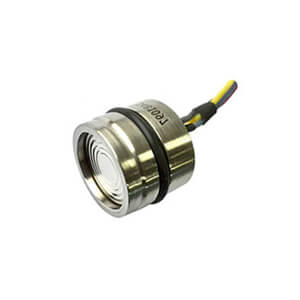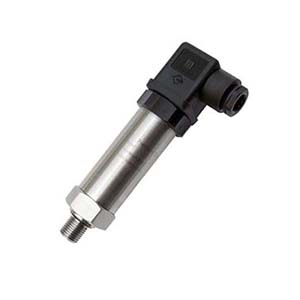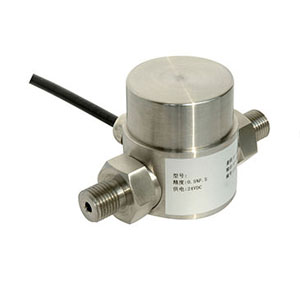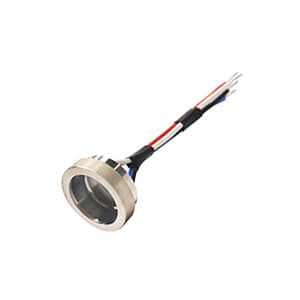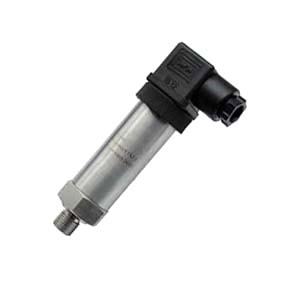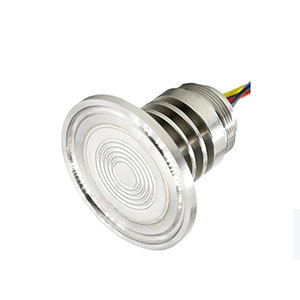What is 0.5-4.5V Pressure Sensor
A 0.5-4.5V signal output is a common standard for pressure sensors and other types of sensors. This type of output is often referred to as a “ratiometric” voltage output because the output voltage is proportional to the ratio of the measured pressure quantity to the full-scale range of the sensor.
Here’s how it works:
The pressure sensor outputs a voltage of 0.5V when there is no pressure applied (0% of full scale).
This is the “zero” or “offset” voltage.
The output voltage increases linearly with pressure, up to a maximum of 4.5V at full scale (100% of the measured range).
The output voltage is ratiometric to the supply voltage. This means that the output voltage is a certain ratio of the supply voltage, rather than a fixed absolute voltage.
For example, if the supply voltage changes, the sensor’s output voltage will change proportionally.
The advantage of this type of output is that it can be directly interfaced with many types of digital systems, such as microcontrollers, without the need for additional amplification or signal conditioning. It also has a higher signal level compared to millivolt output sensors, which can help to reduce susceptibility to noise and interference.
However, 0.5-4.5V output pressure sensor typically consume less power than 4-20mA current output sensors, which can be a significant advantage in battery-powered or energy-sensitive applications.
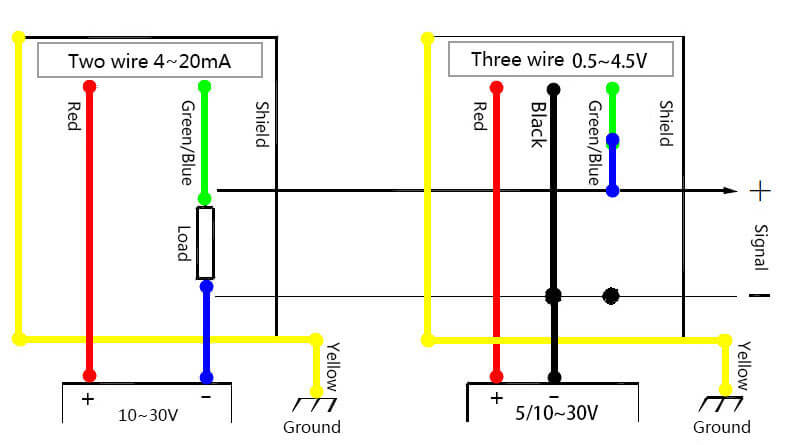
On the other hand, it’s important to note that 0.5-4.5V output sensors typically consume more power than millivolt output sensors, and they often require a regulated power supply for accurate measurements.
As with all sensor types, the choice to use a 0.5-4.5V output sensor depends on the specifics of the application.
Why use 0.5-4.5V output instead of 0-5V?
The use of a 0.5-4.5V output instead of a 0-5V output for pressure sensors and other kinds of sensors often comes down to a couple of key reasons:
1. Interfacing with Microcontrollers:
A 0.5-4.5V output is well-suited for interfacing directly with many microcontrollers. The majority of microcontrollers have built-in analog-to-digital converters (ADCs) that accept a 0-5V input.
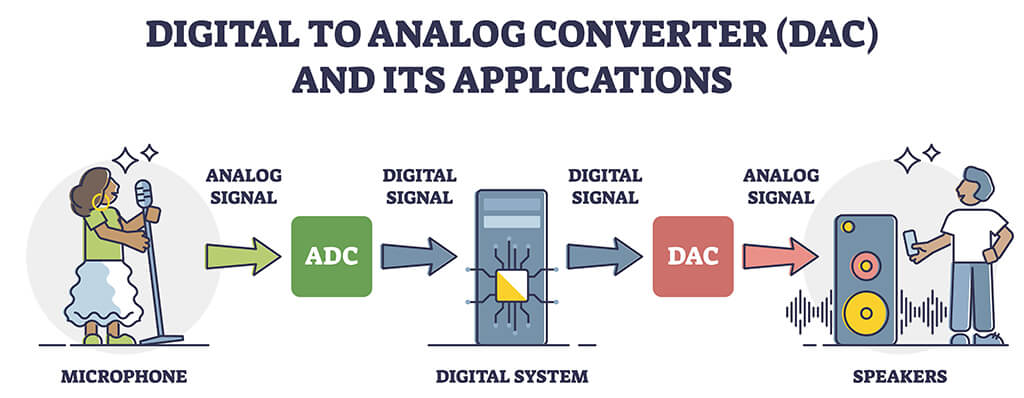
By using a sensor with a 0.5-4.5V output, you can ensure that the full range of the sensor’s output can be read by the ADC, even if the actual supply voltage is slightly less than 5V due to tolerances or voltage drops.
2. Error and Fault Detection:
In many applications, it’s important to be able to detect when a sensor is not functioning correctly.
If a sensor has a 0-5V output, and the output goes to 0V, it could be due to the sensor measuring the minimum value of the physical quantity (e.g., pressure), or it could be due to a fault in the sensor or the wiring.
By using a 0.5-4.5V output, you can distinguish between these two cases. If the output goes below 0.5V or above 4.5V, it indicates a possible fault.
3. Power Supply Considerations:
In some cases, you might not have a perfectly stable 5V supply.
For instance, if you’re running on battery power, the supply voltage could decrease over time. If a sensor has a 0-5V output, a decrease in the supply voltage could cause the sensor’s output to be clipped at the high end.
With a 0.5-4.5V output, you have some margin to accommodate decreases in the supply voltage.
4. Compatibility with Industrial Standards:
The 0.5-4.5V range is a common standard in industrial applications, so using a sensor with this output range can help ensure compatibility with other equipment.
While a 0.5-4.5V output might seem unusual at first glance, it offers several practical benefits in a variety of applications.
Power supply for 0.5-4.5v output pressure sensor
A pressure sensor with a 0.5-4.5V output typically requires a power supply that is slightly higher than the maximum output voltage. This is because the sensor needs some overhead to generate its output signal, drive its internal electronics, and account for any potential voltage drops in the system.
While exact requirements can vary between different sensor models, a common power supply voltage for these sensors is 5V. This gives the sensor enough overhead to generate its 0.5-4.5V output signal while still allowing for some variation in the supply voltage.
However, some sensors may be designed to operate with a wider range of supply voltages.
For example,
some sensors might be able to operate with a supply voltage anywhere between 5V and 30V. These sensors typically include internal voltage regulators to ensure stable operation regardless of the supply voltage.
A 0.5-4.5V pressure sensor, like many other sensors, requires a regulated power supply for a couple of reasons:
What is and Why 0.5-4.5V Pressure Sensor need regulated power supply
What is regulated power supply
A regulated power supply is a system that provides a constant output voltage regardless of changes in load current or variations in the input voltage. This is achieved through a process called voltage regulation.
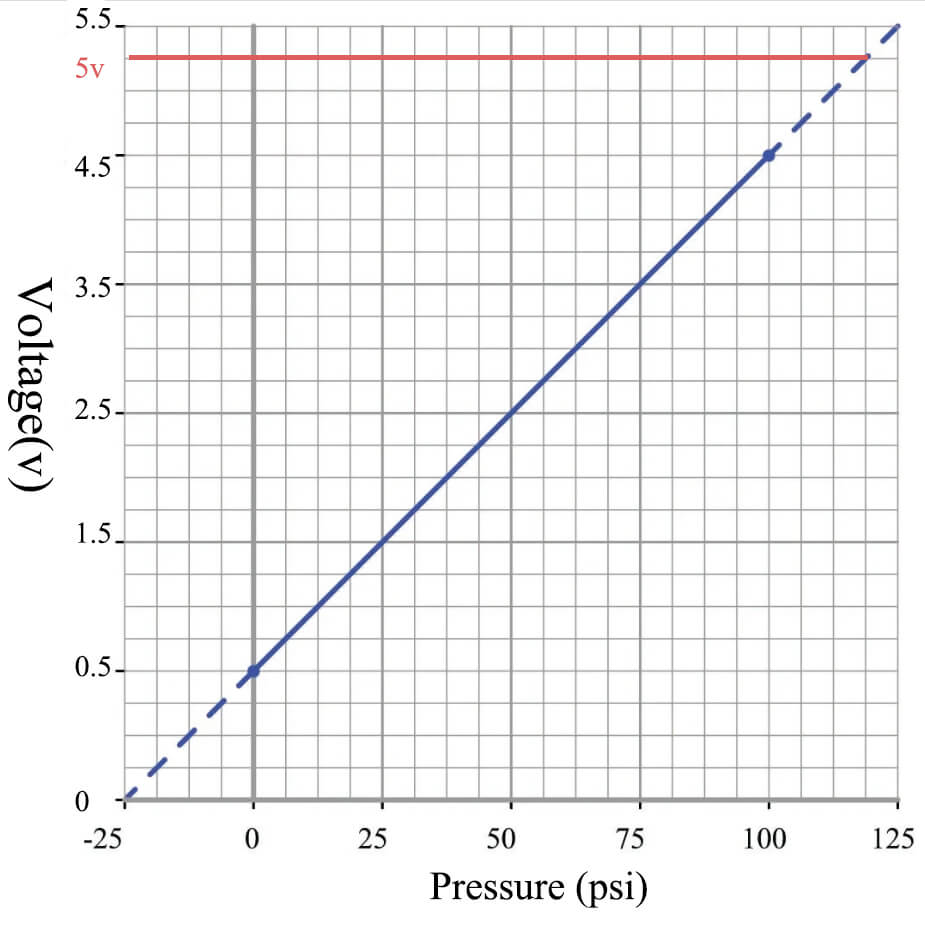
There are two main types of regulated power supplies:
1. Linear Regulated Power Supplies:
These use a voltage regulator circuit to maintain a constant output voltage. The voltage regulator adjusts its resistance based on the load to maintain the desired output. While they are simple and provide low-noise, they can be inefficient, especially when there is a large difference between the input and output voltage, because the excess power (voltage difference multiplied by the current) is dissipated as heat.
2. Switching Regulated Power Supplies:
Also known as switch-mode power supplies (SMPS), these use a switching element (usually a power transistor) that switches on and off rapidly to stabilize the output voltage.
The high frequency on-off cycle is then smoothed with inductors and capacitors to provide a steady DC output. While more complex, they are also more efficient, especially at higher power levels, and can be made compact.
In applications where stability and precision are crucial, such as in the operation of a 0.5-4.5V pressure sensor, a regulated power supply is necessary to ensure that the output voltage accurately correlates with the measured pressure, and is not influenced by fluctuations in the power supply or load.
Why regulated power supply is good for 0.5-4.5V Pressure Sensor
A 0.5-4.5V pressure sensor typically requires a regulated power supply for accurate and reliable operation. This is primarily due to how the sensor’s output voltage is produced and how it corresponds to the sensor’s input (the pressure).
The output of a 0.5-4.5V pressure sensor is a scaled representation of the input pressure, based on the supplied power. If the supplied power fluctuates, the output voltage, which is a proportion of this supply, will also fluctuate.
This means that a variation in the power supply voltage will result in a corresponding variation in the output voltage, which can be misinterpreted as a change in pressure.
For example,
Let’s consider a hypothetical pressure sensor that operates with a 5V power supply and provides an output of 0.5-4.5V depending on the measured pressure.
If the power supply drops to 4.5V, the sensor’s output might also drop proportionally.
A pressure that previously resulted in a 2.5V output might now produce a 2.25V output.
The control system could misinterpret this as a decrease in pressure, when it’s actually a result of the decreased power supply.
Therefore, to ensure the accuracy of the sensor’s output, a stable and regulated power supply is typically required. This ensures that the output voltage accurately represents the measured pressure, rather than any fluctuations in the power supply.
Cos and pros of 0.5-4.5V Pressure Sensor
A 0.5-4.5V pressure sensor has several advantages and drawbacks, depending on the specific application and system requirements.
Pros of 0.5-4.5V Pressure Sensor
1.Fault Detection:
The 0.5-4.5V output allows for built-in fault detection. If the output voltage falls below 0.5V or rises above 4.5V, it indicates a fault or error in the system. This can be crucial in maintaining system safety and reliability.
2. Power Supply Tolerance
The 0.5-4.5V output range provides a buffer against variations in the power supply. If the supply voltage drops slightly, the sensor can still utilize its full output range without clipping at the upper end.
3. Compatibility
The 0.5-4.5V range is a common standard in industrial applications, making these sensors compatible with many systems and devices.
4. Noise Immunity
Compared to sensors providing a millivolt output, a 0.5-4.5V output sensor is less susceptible to electrical noise and interference, leading to more accurate readings.
Cons of 0.5-4.5V Pressure Sensor
1.Reduced Resolution
Since the sensor is not using the full 0-5V range, the resolution is slightly reduced. For applications that require very high precision, this could be a disadvantage.
2. Power Requirements
These sensors typically require a regulated power supply, which can add complexity and cost to the system compared to sensors that can operate with a wider range of supply voltages.
3. Integration Complexity
If the downstream electronics expect a 0-5V signal, additional circuitry may be required to translate the 0.5-4.5V signal to the expected range.
As with any component selection, the choice to use a 0.5-4.5V pressure sensor should be based on a thorough analysis of the system requirements, including factors like power availability, accuracy requirements, environmental conditions, and cost constraints.
How to decide between 0.5-4.5V and 4-20mA output
Deciding between a 0.5-4.5V and a 4-20mA output for a pressure sensor depends on the specific requirements and constraints of your application, when you make decision, here are three key considerations for your reference:
1. Distance and Noise Immunity
For applications where the sensor and the control system are located far apart, a 4-20mA sensor could be more suitable. This is because current signals, unlike voltage signals, do not diminish over long distances.
Furthermore, 4-20mA signals are less susceptible to electrical noise, which could interfere with the signal in electrically noisy environments or over long cable runs.
For example, if you have a sensor located 100 meters away from your control system in an industrial setting with high electrical noise, a 4-20mA sensor would give a more accurate and dependable signal compared to a 0.5-4.5V sensor.
2. Power Supply Considerations
A 0.5-4.5V sensor typically requires a more stable and regulated power supply. If your system has a stable 5V power supply, the 0.5-4.5V sensor could be a good fit.
On the other hand, 4-20mA sensors can operate with a wider range of supply voltages, making them more suitable for systems with variable or unstable power supplies.
For instance,
If you’re working with an off-grid system powered by a solar panel and a battery, where voltage can fluctuate based on solar input and battery charge level, a 4-20mA sensor would be a more reliable choice.
3. System Compatibility and Fault Detection
The control system or data acquisition device’s input requirements also play a crucial role in the decision. If your system is designed to accept a 0.5-4.5V input, a pressure sensor with this output would be more straightforward to implement.
Similarly, if your system is designed for a 4-20mA input, a sensor with this output might be better.
Additionally, both types of sensors can offer built-in fault detection.
- For a 0.5-4.5V sensor, output falling below 0.5V or rising above 4.5V could indicate a fault.
- For a 4-20mA sensor, a reading below 4mA or above 20mA could indicate a fault.
For example, in safety-critical applications like a pressure control system in a chemical plant, where early fault detection can prevent potential safety hazards, this built-in fault detection feature can be a significant advantage.
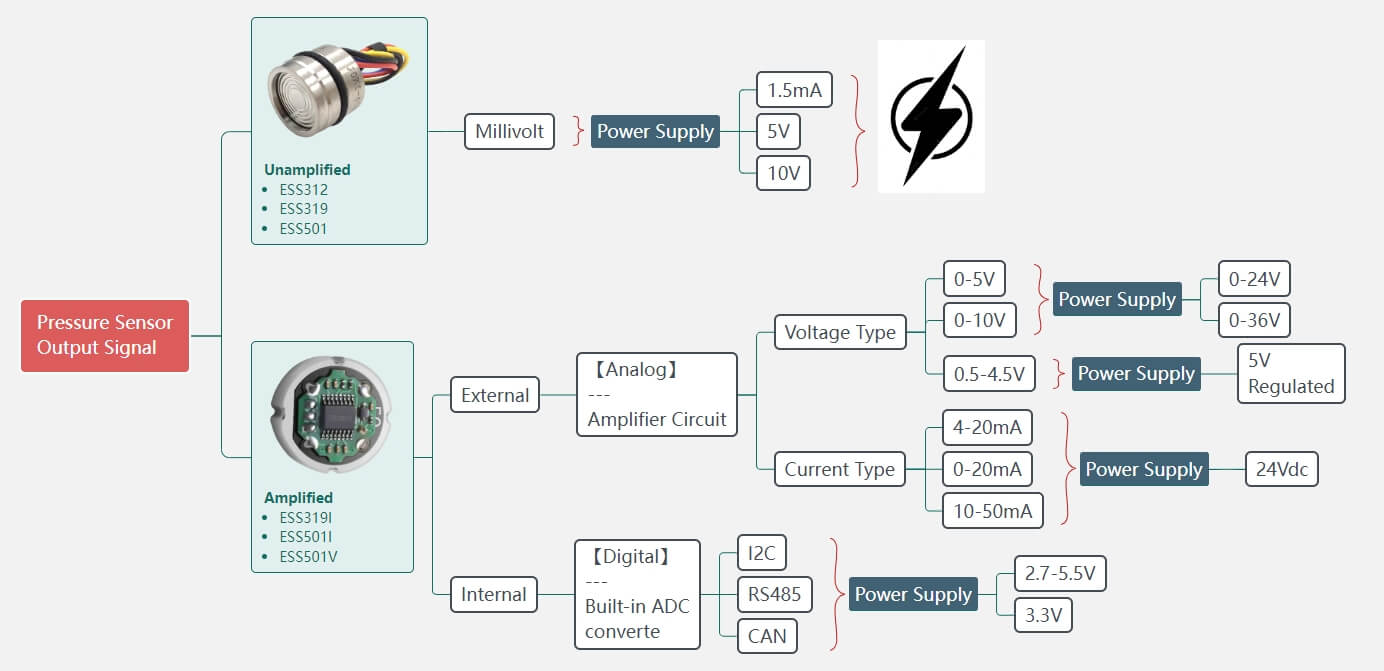
Remember, the choice between a 0.5-4.5V and a 4-20mA pressure sensor should be based on your specific application requirements, including factors like sensor location, power supply stability, system compatibility, and the need for fault detection.
Top industries use 0.5-4.5V Pressure Sensor
0.5-4.5V pressure sensors are widely used in various industries due to their flexibility, ease of integration with many microcontrollers, and relatively low power consumption.
Below I will list some of them, where 0.5-4.5V output is most popular and accepted
In the automotive sector, pressure sensors are essential to ensure optimal vehicle performance and safety.
They are used for monitoring:
- Fuel Pressure
- Oil Pressure
- Tire Pressure
2. Industrial Process Control
In systems such as pipelines, tanks, or vessels, maintaining the right pressure is crucial. Pressure sensors help detect overpressure or under-pressure situations, which could lead to inefficiencies or safety risks.
Also, a sudden drop in pressure can indicate a leak, which could be hazardous in industries dealing with chemicals or gases. Pressure sensors provide real-time monitoring to quickly identify and address such issues.
They are used for monitoring:
- Monitor System Pressure
- Leak Detection
3. HVAC Systems
In Heating, Ventilation, and Air Conditioning systems, pressure sensors monitor the pressure in ductwork and use this data to control fans and dampers, achieving a balanced and comfortable airflow throughout a building.
An unexpected change in pressure could indicate a problem, such as a blocked filter or a failing component. Early detection allows for prompt maintenance, preventing more significant damage or inefficiency.
In this filed, they are used for monitoring:
- Manage Airflow
- Detect Issues
4. Battery operated system
What is more, in certain applications, particularly in the domains of vehicles or battery-operated systems, there arises a necessity for an output signal that can be efficiently operated at low power, thereby ensuring an extended service life.
It is customary for ratiometric signals to be transmitted within the range of 10 to 90 percent of the power supply voltage.
Devices equipped with ratiometric output do not generate an internal reference voltage. Instead, all components function in direct proportion to the prevailing voltage, adhering to the fundamental principle of operating “in ratio.”
By omitting the inclusion of components required for generating the internal reference voltage, the power requirements imposed on the electronics are significantly diminished, thereby contributing to enhanced energy efficiency and overall performance.
In each of these above industries, the use of a 0.5-4.5V pressure sensor provides clear advantages.

